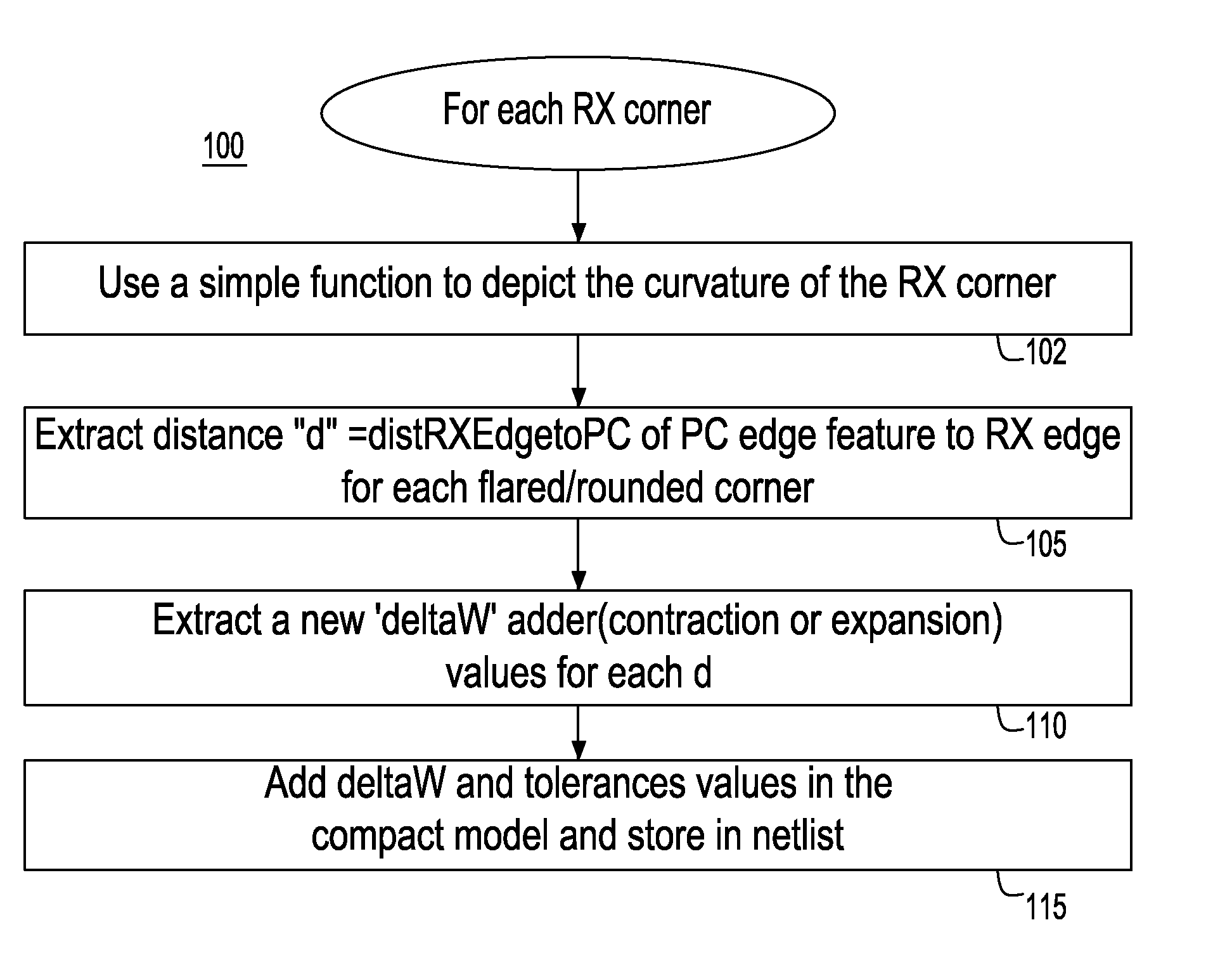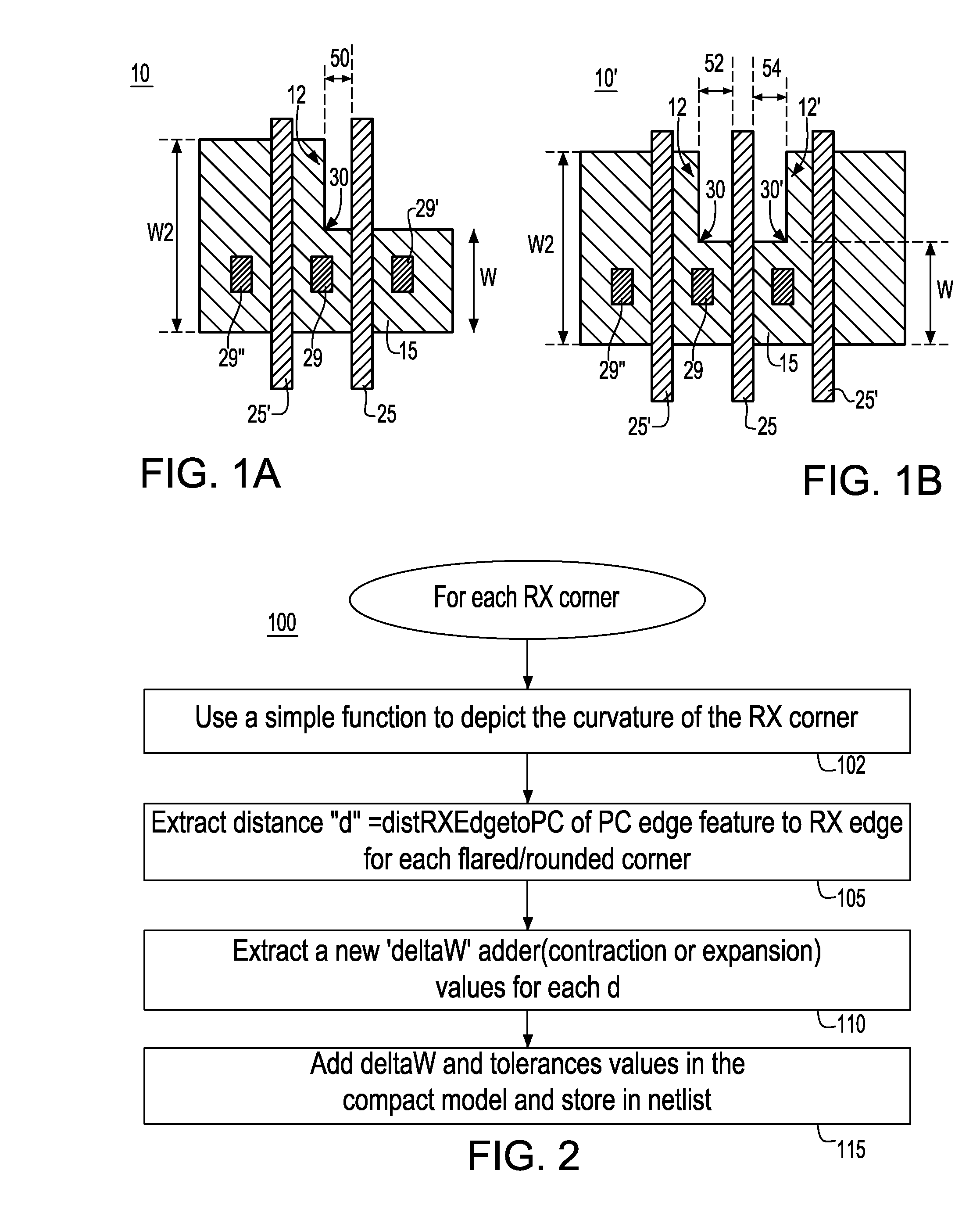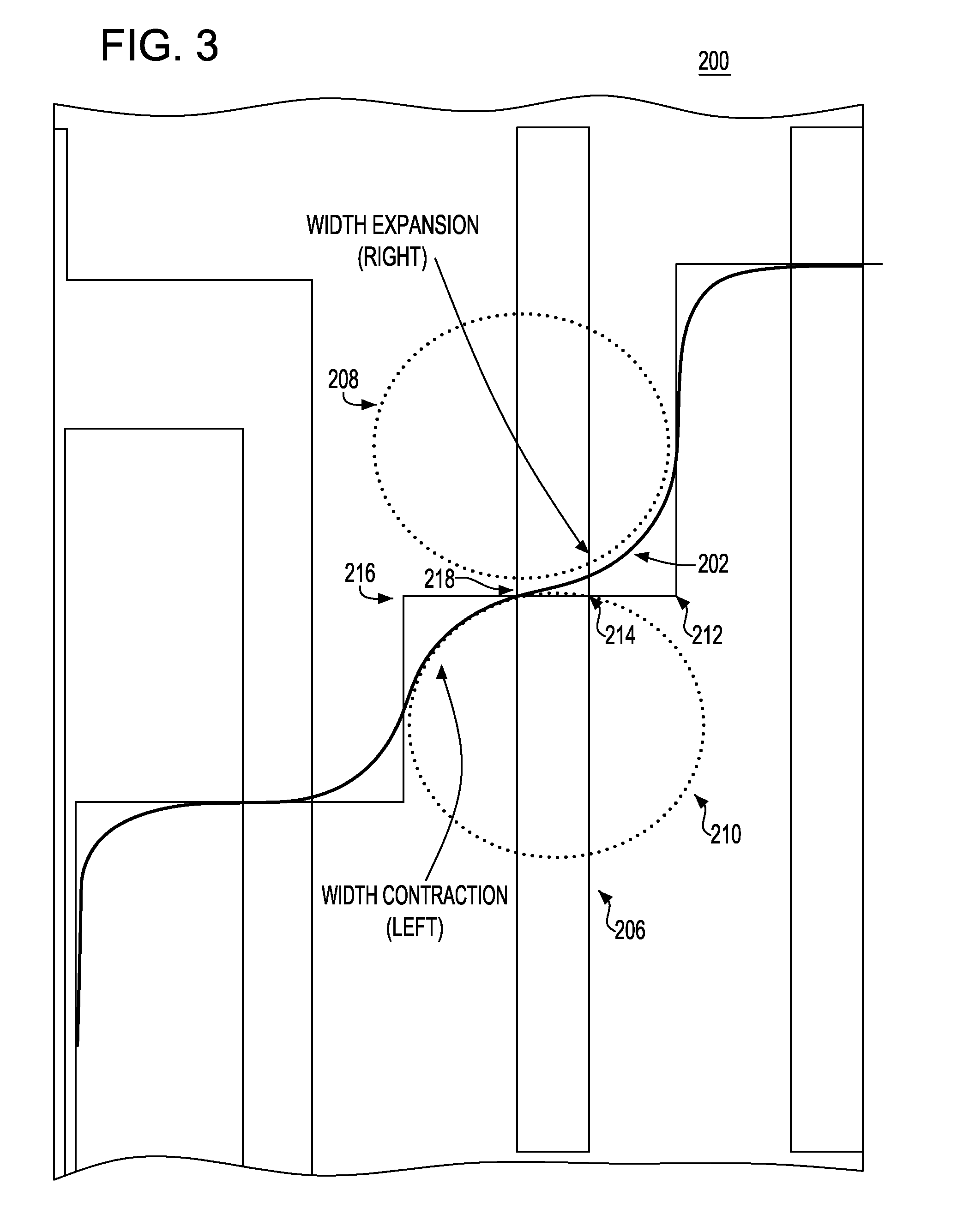Methodology for improving device performance prediction from effects of active area corner rounding
a technology of active area corner rounding and device performance prediction, which is applied in the direction of electric/magnetic computing, analogue processes for specific applications, instruments, etc., can solve problems such as performance negatively affecting performan
- Summary
- Abstract
- Description
- Claims
- Application Information
AI Technical Summary
Benefits of technology
Problems solved by technology
Method used
Image
Examples
Embodiment Construction
[0025]FIG. 2 depicts a methodology flow 100 according to one embodiment of the invention. It is understood that the method depicted will apply for each individual RX corner being modeled. In the method depicted, an analytical model is presented that includes a first step 102 that implements a simple function to depict the curvature of the flared RX corner region as shown in FIGS. 1A, 1B. In step 102, this model may be obtained by performing an RX lithographic contours analysis and from which an analytical model formulation with input choices based on the lithographic contours analysis is developed. In one embodiment, a contours analysis model is a geometric function, e.g., a circle, to determine the corner rounding description. In alternative embodiments, other geometric functions or combinations of functions (parabolas, triangles, etc.) may be used for the model; however, it has been determined that a circle function sufficiently fits the RX rounding effects, for example.
[0026]Furt...
PUM
 Login to View More
Login to View More Abstract
Description
Claims
Application Information
 Login to View More
Login to View More - R&D
- Intellectual Property
- Life Sciences
- Materials
- Tech Scout
- Unparalleled Data Quality
- Higher Quality Content
- 60% Fewer Hallucinations
Browse by: Latest US Patents, China's latest patents, Technical Efficacy Thesaurus, Application Domain, Technology Topic, Popular Technical Reports.
© 2025 PatSnap. All rights reserved.Legal|Privacy policy|Modern Slavery Act Transparency Statement|Sitemap|About US| Contact US: help@patsnap.com



